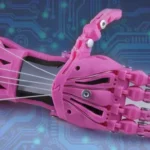3D Printing: Revolutionizing the Healthcare Industry
Choosing the right material is crucial for a successful start in 3D printing. Beginners often look for materials that are easy to work with, affordable, and versatile. Here’s a guide to the best 3D printing materials for those new to the craft, along with their features and ideal uses.
1. PLA (Polylactic Acid)
Why It’s Great for Beginners
PLA is the most beginner-friendly filament. It’s easy to print, requires low heat, and doesn’t warp easily.
Key Features
- Made from renewable resources like corn starch.
- Emits minimal odor during printing.
- Available in various colors and finishes.
Best For
Prototypes, decorative items, and non-functional parts.
Tips
- No heated bed required, though it helps with adhesion.
- Store in a dry place to prevent moisture absorption.
2. PETG (Polyethylene Terephthalate Glycol)
Why It’s Great for Beginners
PETG offers a balance between PLA’s ease of use and ABS’s durability. It’s slightly flexible and more impact-resistant.
Key Features
- Resistant to moisture and chemicals.
- Produces strong, smooth prints.
- Less prone to warping compared to ABS.
Best For
Functional parts, containers, and mechanical components.
Tips
- Requires a heated bed (around 70°C).
- Use a moderate print speed for better results.
3. ABS (Acrylonitrile Butadiene Styrene)
Why It’s Great for Beginners
Though slightly challenging, ABS is worth considering for its strength and durability once you master the basics.
Key Features
- High heat resistance.
- Excellent for post-processing like sanding or painting.
- Tough and long-lasting.
Best For
Mechanical parts, toys, and functional prototypes.
Tips
- Requires a heated bed (90–110°C) and enclosed printing area.
- Ventilate your workspace to avoid fumes.
4. TPU (Thermoplastic Polyurethane)
Why It’s Great for Beginners
TPU is flexible and durable, making it great for soft or elastic prints. It’s slightly more challenging but rewarding.
Key Features
- High elasticity and impact resistance.
- Resilient to wear and tear.
- Adheres well to most surfaces.
Best For
Phone cases, seals, and wearable items.
Tips
- Use slower print speeds for better flexibility.
- Requires a direct-drive extruder for consistent printing.

5. Wood-Filled PLA
Why It’s Great for Beginners
Wood-filled PLA combines ease of use with aesthetics, creating prints that resemble wood.
Key Features
- Contains wood fibers mixed with PLA.
- Can be sanded and stained like real wood.
- Prints with a unique texture and finish.
Best For
Decorative pieces, artistic models, and furniture prototypes.
Tips
- Use a larger nozzle to prevent clogs.
- Adjust temperature to achieve different shades of wood.
6. Nylon
Why It’s Great for Beginners
Though slightly advanced, nylon is excellent for durable and flexible parts with high strength.
Key Features
- High impact resistance.
- Great for moving parts and functional items.
- Absorbs dye for custom colors.
Best For
Gears, hinges, and industrial components.
Tips
- Requires a heated bed (90–110°C).
- Store in airtight containers to prevent moisture.
Conclusion
For beginners, PLA is the best starting point due to its simplicity and affordability. As you gain experience, materials like PETG, TPU, and even wood-filled PLA offer opportunities to experiment and expand your skills. Each material has unique properties, so choose one that aligns with your project needs and printer capabilities.



